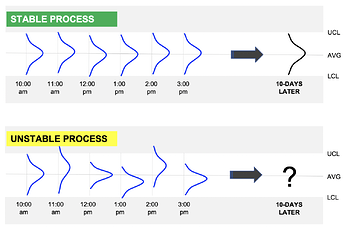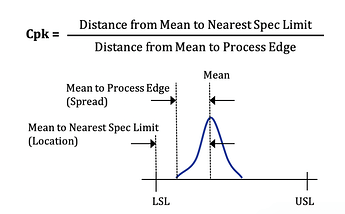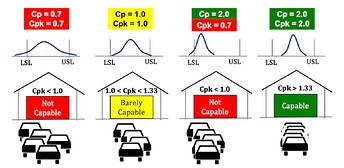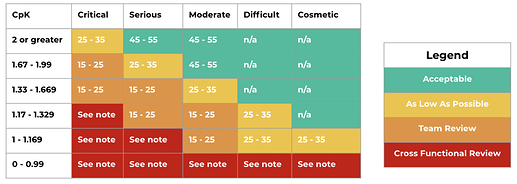Key statistical concepts regarding full-production manufacturing and analyzing data off the line.
Let’s say you have a production line for a part and want to measure its performance. With respect to the part, it has dimensions and tolerances per its specifications and also actual measured dimensions.
1. Stability
An important step is to ensure your process is stable by using the actual dimensions of the parts produced. Over the course of a shorter and longer time period, all the parts will be measured to produce an average and standard deviation. A stable process will be such that these values do not change over time.
2. Cp
With the distribution of measurements known, the difference between the largest and smallest value will equal the process width. The differences specified by the tolerances would give way to the specification width. The specification divided by the process is the a process capability index, Cp, where a value larger than 1 means the measured range is lower than the specified range. A value of 1.33 or higher is ideal to account for error.
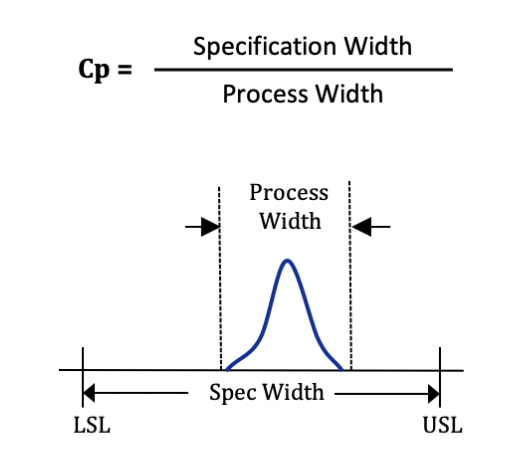
3. Cpk
The previously mentioned Cp doesn’t account for the location of these spreads. Cpk, which is the distance from the actual mean to specified limit divided by the distance from the actual mean to the actual limit. Similarly, a Cpk of 1.33 or higher is ideal.
4. Pp and Ppk
Knowing the Cp and Cpk values means that the process capability study is complete and predictions can be made about the process’ ability to repeatedly produce parts within specification. Whether or not this prediction is true is measured by a process performance study with Pp and Ppk. These values are derived similarly to Cp and Cpk respectively and should remain the same if the process is actually stable.
5. Multiple Parts
The aforementioned categories were with respect to a single part, however many final products are assemblies containing several parts. Understanding the dimension distribution for a set of parts can be used to determine the probability that an assembly will fit and function. Additionally, understanding potential failures modes can help determine what the Cpk should be for a given process and if any changes to the design or its target values need to be made.
Sources/Read More
Process Capability Analysis - Cp, Pp, Cpk, Ppk
Tolerance Stacks and Cpk
Additional Resources
